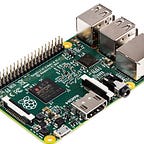Introduction to Clean Architecture: Best Practices for Software Design
Clean Architecture is a design philosophy introduced by Robert C. Martin, also known as Uncle Bob. The primary goal is to craft a system that is as independent of frameworks, UI, databases, and any external agency as possible. This independence enables you to write code that’s easier to maintain, test, and extend.
Key Components of Clean Architecture
Clean Architecture splits the software into several concentric layers, which include:
- Entities: Represent the business objects that have deep meaning in the context of the software. They encapsulate the core business rules.
- Use Cases: Coordinate the flow of data between entities and the outside world, implementing the application’s specific business rules.
- Interface Adapters: Convert data from the format most convenient for entities and use cases to the format in which it is used by the external agents like UI, database, etc.
- Frameworks and Drivers: These are the outermost layers and include tools and frameworks like databases, UIs, external APIs, etc.
Benefits of Clean Architecture
There are several compelling reasons to adopt Clean Architecture in your projects:
- Testability: Independence of business logic from dependencies makes…
